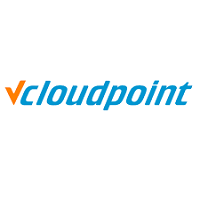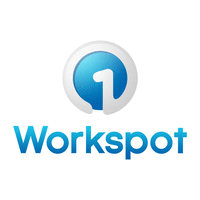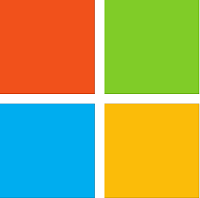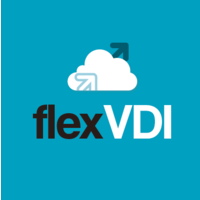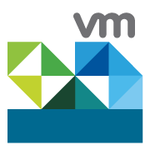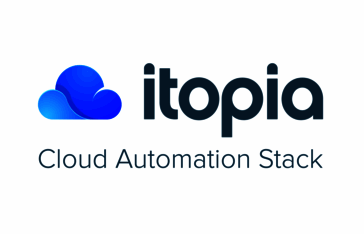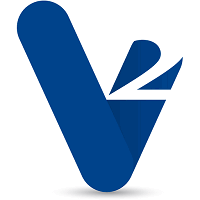Yes, VDI software is intended to be available from numerous devices and platforms. Users may access their virtual desktops from any device, including laptops, tablets, and smartphones, as long as they are connected to the internet. Furthermore, most VDI software is interoperable with a wide range of operating systems, including Windows, Mac, and Linux, giving customers greater flexibility and convenience.
List of Best VDI Software
vCloudPoint is virtual desktop solution designed to centralize desktops and machines on a single server. Its reliable Linux-based hypervisor, intuitive web interface, and console agent service help businesses reduce costs, improve security, and incre...Read More vCloudPoint
SnapVDI solution for all your hardware and software virtualization requirements. Our complete package includes high availability servers, storage, thin clients, and the powerful SnapVDI Manager. With our innovative Spark architecture, experience top-...Read More SnapVDI
UDS Enterprise is connection broker software designed to work seamlessly on multiple platforms. It provides a highly customizable and secure VDI platform, allowing users to easily access their Windows and Linux applications from any device through a...Read More UDS Enterprise
Nutanix - the premier choice for hybrid cloud solutions in the enterprise market. Our state-of-the-art technology encompasses hyper-converged infrastructure, virtualization, and software-defined storage, allowing businesses to optimize data protectio...Read More Nutanix
Experience the ultimate flexibility and security with Ace Cloud VDI. Our software offers businesses the ability to access virtual desktops through on-premises and cloud-based solutions. Choose from a variety of pricing options to meet your unique bus...Read More Ace Cloud VDI
Workspot solution for businesses in search of a streamlined platform for their workforce. Offering a cloud-based setup and administration of Windows 10 desktops and GPU workstations, Workspot boasts cross-platform client tools and a secure IT managem...Read More Workspot
QSAN is a highly efficient and affordable choice for VDI infrastructure. Its modular structure, automatic tiering, and SSDCache system make it simple to implement virtualization both in the cloud and on hardware. It caters to multi-tier applications...Read More QSAN
VERDE VDI is a robust business computing solution known for its advanced features, such as cloud branch technology, strong security measures, and GPU card support. Its intuitive interface and high-speed network allow for seamless operation. Built wit...Read More VERDE VDI
Leostream is a VDI software that offers a fully integrated solution for client devices, database storage, and desktop agents. With cutting-edge graphics, secure remote access, and a user-friendly interface, our software efficiently maximizes the use...Read More Leostream
Microsoft Azure is a ecommerce management platform that is trusted by countless E-commerce businesses. It provides a comprehensive set of resources and capabilities to enhance sales, cater to customer demands, and optimize supply chain operations. Wi...Read More Microsoft Azure
flexVDI is a virtual desktop infrastructure that offers effortless accessibility. Benefit from customizable Windows and Linux virtual machines to optimize your desktop experience. With a secure private cloud, businesses can enjoy increased mobility a...Read More flexVDI
DesktopReady, Windows 10 cloud desktop solution that prioritizes security, compliance, and efficient performance. Built on the reliable Azure platform, it eliminates upfront costs and offers 24/7 service desk support for a seamless user experience. M...Read More DesktopReady
Sangfor is a software that provides a variety of solutions in cybersecurity, cloud, and infrastructure to facilitate and safeguard digital evolution. Boasting a significant international presence and serving more than 100,000 satisfied clients, Sangf...Read More Sangfor
Experience the advanced features of VMware vSphere, turning your computer into a high-performing virtual workstation. This software offers extensive performance monitoring, efficient data management, and reliable storage. Boost productivity and mobil...Read More VMware vSphere
The Virtual Desktop Platform, a virtualization software tailored for contemporary enterprises. Our intuitive interface provides a variety of adaptable features such as network supervision, performance assessment, virtual storage collaboration, and fi...Read More The Virtual Desktop
Itopia is a SaaS platform that simplifies the use of Google Cloud Platform (GCP) for seamless scalability and enhanced security. Our advanced automation and orchestration tool eliminates the need for manual setup, making workload management more effi...Read More Itopia
Vagon Teams - a cloud-based solution crafted for effortless teamwork and streamlined task handling. Our state-of-the-art streaming protocol, offering 60fps and 4K support, guarantees a swift and seamless remote workspace experience. No more delays or...Read More Vagon Teams
V2 Cloud is a cloud-based solution for efficient data storage and sharing. Our robust software automatically backs up your data in a secure database, while providing a seamless platform for collaboration among multiple users. Enjoy unparalleled bandw...Read More V2 Cloud
Learn More About VDI Software
- What Is VDI Software?
- What Are The Recent Trends In VDI Software?
- Benefits Of Using VDI Software
- Important Factors To Consider While Purchasing VDI Software?
- What Are The Key Features To Look For In VDI Software?
- Why Do Businesses Need VDI Software?
- How Much Time Is Required To Implement VDI Software?
- What Is The Level Of Customization Available In VDI Software?
- Which Industries Can Benefit The Most From VDI Software?
- Conclusion
What Is VDI Software?
VDI (Virtual Desktop Infrastructure) software is a form of technology that lets users connect to a virtual desktop environment from any device, regardless of operating system. Simply said, it allows you to view your computer desktop remotely from any location, on any device. VDI was developed to simplify desktop management and increase accessibility for employees, particularly those working remotely or on the go.
VDI software hosts all of the programs, apps, and files that would normally be saved on a real desktop or laptop. This server then transmits the desktop interface to the user's device, giving them the identical experience as if they were working on a real computer. VDI software consists of three basic components: virtualization software, connection broker, and remote desktop services.
Virtualization software, such as VMware or Citrix, generates a virtual machine that includes the operating system as well as all programs and files. The connection broker connects the user's device to the virtual desktop, whereas remote desktop services transport data between the virtual desktop and the user's device. One of the primary benefits of utilizing VDI software is the ability to centralize desktop administration.
This implies that IT departments can quickly monitor and upgrade all virtual desktops from a single location, rather than managing individual PCs. This saves time, money, and enhances security because all data is saved on a secure server rather being spread over multiple devices. Employees benefit from more flexibility and mobility thanks to VDI software, which allows them to access their desktop from any place or device.
This, in turn, leads to increased productivity because staff may work when away from a real computer. When contemplating purchasing VDI software, it is critical to examine your company's needs and select a solution that meets those objectives. Look for software with a user-friendly interface, effective management tools, and strong security measures. Consider scalability and compatibility with your current systems to ensure a smooth integration procedure.
What Are The Recent Trends In VDI Software?
VDI (Virtual Desktop Infrastructure) software is a cutting-edge technology that enables businesses to optimize their IT setup and increase overall productivity. With the advent of remote work and the demand for scalable and secure access to corporate data, VDI software has grown in popularity in recent years.
We'll go over the most recent trends in VDI software to help you make an informed decision when selecting the best solution for your organization.
1. Move Toward Cloud-Based Solutions: One of the most significant changes in VDI software is the migration to cloud-based solutions. With the growing demand for remote work and safe access to corporate data from any place, many firms are turning to cloud-based VDI solutions. This enables flexible access to virtual desktops, eliminates the need for on-premises equipment, and provides scalability to suit the changing demands of the enterprise.
2. Integration Of Mobile Devices: Another trend in VDI software is the incorporation of mobile devices. With the increasing use of smartphones and tablets, employees want to be able to access their work desktop from their personal mobile devices. VDI software suppliers now offer seamless integration with mobile devices, allowing customers to access their virtual desktops while on the go. This not only boosts productivity, but also ensures secure access to corporate data.
3. AI-Powered Automation: Many VDI software suppliers are implementing AI (Artificial Intelligence) into their offerings to boost automation and usability. AI-powered technologies can assess user behavior and optimize the virtual desktop experience accordingly. Employees benefit from a more personalized and efficient VDI experience, which leads to greater productivity and user happiness.
4. Enhanced Security Features: In today's cybersecurity environment, it is critical to have strong security measures in place to secure sensitive corporate data. VDI software suppliers are constantly updating its security features to give improved protection against cyber dangers including data breaches, malware, and ransomware attacks. VDI systems are increasingly including features such as multi-factor authentication, data encryption, and network segmentation.
5. Cost-Effective Options: VDI software suppliers are increasingly giving more affordable choices to make the technology available to organizations of all sizes. With the introduction of open-source VDI solutions and market competition, organizations may now pick from a variety of low-cost options that provide the same features and functionality as more expensive solutions.
Benefits Of Using VDI Software
When it comes to desktop management, Virtual Desktop Infrastructure (VDI) software has become a popular choice for small and large enterprises. VDI software enables users to access their virtual desktops from any device, anywhere, making it an adaptable and efficient solution for modern workplaces.
We'll go over the numerous advantages of adopting VDI software so you can make an informed selection for your firm.
1. Improved Security: One of the primary benefits of adopting VDI software is the increased security features. VDI stores and manages all data centrally on servers rather than individual devices, making access more secure and controlled. This decreases the likelihood of data breaches and protects data from cyber threats.
2. Simplified Management: VDI software improves desktop management by centralizing control and updates. This reduces the need for IT personnel to physically visit each device for updates and maintenance, which saves time and resources. VDI allows IT professionals to easily troubleshoot issues and alter desktop setups from a centralized place, resulting in a more effective and streamlined administration approach.
3. Cost Savings: Businesses can save money by implementing VDI software. Organizations can save money on actual desktop purchases and maintenance by employing virtual desktops. Furthermore, because all data and applications are kept and managed centrally, hardware and software upgrades may be performed less frequently, resulting in lower maintenance costs.
4. Increased Flexibility And Mobility: In today's fast-paced corporate climate, the flexibility to access work from any location is critical. VDI software provides this flexibility by allowing employees to access their virtual desktops from any device, whether a desktop, laptop, or mobile device. This leads to increased productivity, collaboration, and the capacity to work remotely.
5. Improved Disaster Recovery: Data loss and system failures can have serious ramifications for enterprises. VDI software automatically backs up data on a regular basis, making disaster recovery faster and more efficient. In the event of a disaster, employees may rapidly access their virtual desktops via any device, assuring company continuity.
6. Improved User Experience: VDI software delivers a consistent user experience across all devices, removing compatibility difficulties and guaranteeing that all users have access to the same programs and data. This leads to increased productivity and less user irritation.
Important Factors To Consider While Purchasing VDI Software?
When selecting VDI (Virtual Desktop Infrastructure) software, there are numerous critical elements to consider to ensure that you make the best option for your company. VDI software enables the virtualization of desktop environments, resulting in centralized management and easy access to programs and data for a more productive and flexible workplace.
1. Compatible With Your Existing Infrastructure: Before acquiring any VDI software, ensure that it is compatible with your present IT infrastructure and hardware. Compatibility concerns might lead to significant expenditures and delays in implementation. To avoid future problems, properly analyze your network, storage, and server capacities.
2. Deployment Options: Consider the many deployment choices for VDI software, including on-premises, cloud, and hybrid models. Each has advantages and disadvantages, so it is critical to assess which choice best meets your company's needs and objectives. For example, an on-premise solution may provide greater control and protection, whereas a cloud-based solution can provide scalability and cost savings.
3. Scalability And Performance: As your company expands, so will its VDI requirements, and it is critical to choose software that can scale accordingly. Consider the software's ability to accommodate multiple users, applications, and data, as well as its performance. The last thing you want is a slow virtual desktop experience for your staff.
4. Security: Features VDI software can assist increase data security, but you must select a solution that includes advanced security features like encryption, user authentication, and malware protection. Consider the ability to set granular access controls, as well as data backup and recovery.
5. User Experience And Customization: The end purpose of implementing VDI software is to improve the user experience. It is critical to choose a solution that provides a seamless and consistent experience across devices and places. Look for customization capabilities that enable for personalized desktop environments and integration with other programs.
6. Cost: VDI software can be a major investment, thus it is critical to analyze the total cost of ownership. Aside from the initial purchase price, consider license, maintenance, and support costs. Also, consider any additional expenditures for hardware upgrades or implementation services.
7. Vendor Support And Reputation: Selecting a trusted vendor is critical to the success of your VDI implementation. Consider the vendor's support options, customer service reputation, and track record of offering dependable solutions. It is also beneficial to study reviews and speak with other firms who have used the program to gain real-world experience.
What Are The Key Features To Look For In VDI Software?
When looking for VDI software, it's critical to understand which key characteristics would best meet your company's demands. VDI, or virtual desktop infrastructure, is a technology that enables users to access a virtualized desktop environment from any device while maintaining a consistent and secure user experience.
The following are the essential elements to look for in VDI software.
1. Compatibility With Numerous Devices And Operating Systems: One of the most significant benefits of VDI is its ability to deliver a consistent user experience regardless of the device or operating system being utilized. Look for VDI software that works with a variety of devices, including desktops, laptops, tablets, and smartphones, as well as operating systems like Windows, macOS, and Linux.
2. Robust Security Features: Because VDI offers remote access to sensitive data and applications, it is critical to select software with strong security capabilities. Look for features like multi-factor authentication, data encryption, and the ability to manage access and permissions for various user groups.
3. Flexible Deployment Options: VDI software should be deployable on-premises, in the cloud, or in a hybrid manner. This enables organizations to select the deployment strategy that best suits their budget and IT infrastructure.
4. Centralized Management: One of the primary advantages of VDI is the ability to centrally administer and maintain virtual desktops, apps, and data. Look for software that includes a user-friendly management console for monitoring and managing the complete VDI infrastructure.
5. Scalability: As enterprises expand, their VDI requirements may also grow. Choose VDI software that can be quickly scaled to meet your organization's changing needs.
6. Integration With Existing IT Infrastructure: Make sure the VDI software works seamlessly with your existing IT infrastructure, which includes applications, storage, and backup systems. This will prevent compatibility difficulties and allow a smooth transition to VDI.
7. User Experience: The end-user experience is critical to the success of any VDI deployment. Look for software that provides a seamless and responsive user experience, including multimedia support, quick logins, and the flexibility to customize the virtual desktop.
Why Do Businesses Need VDI Software?
Businesses require Virtual Desktop Infrastructure (VDI) software for a variety of reasons. First, it enables enterprises to centralize and manage their desktops and programs in a virtual environment, hence minimizing the need for actual hardware and simplifying IT management. This can help firms save time and money by lowering the expense of purchasing, updating, and maintaining physical devices.
Additionally, VDI software allows employees to access their desktops and apps from a variety of devices, including as laptops, tablets, and smartphones. This flexibility encourages remote work and boosts productivity, particularly in today's digital age, when many organizations employ a remote staff. Furthermore, VDI software has enhanced security capabilities like data encryption and remote wiping to safeguard sensitive enterprise information.
This is especially crucial for enterprises that handle sensitive data, such as healthcare or financial institutions, because it allows them to comply with industry-specific standards while also protecting data privacy. VDI software also helps firms increase their disaster recovery capabilities. Organizations that centrally store PCs and data in a virtual environment can quickly resume operations following a disaster, avoiding downtime and productivity loss.
Another advantage of VDI software is its scalability. Businesses may quickly add and delete virtual desktops and applications as their needs change. This eliminates the need for costly hardware updates, allowing businesses to scale without interruption. Additionally, VDI software gives enterprises more control over their IT infrastructure. IT departments can swiftly deliver new updates, patches, and software programs across all virtual desktops, maintaining consistency and lowering the likelihood of compatibility issues.
How Much Time Is Required To Implement VDI Software?
The time required to implement VDI software varies based on a variety of factors. These can include the organization's size and complexity, the exact features and capabilities that will be deployed, and the level of user training and preparation required. On average, the implementation procedure can last from a few weeks to several months.
It could take up to a year for larger firms or those with very sophisticated IT environments. The first step in adopting VDI software is to conduct a thorough assessment of the organization's present IT infrastructure and identify the precise goals and requirements for the new system. This may entail doing a thorough inventory of existing gear and software, as well as detecting any potential compatibility concerns or upgrades.
Once the first planning step is completed, the implementation process can begin. This often entails establishing the required server infrastructure, installing and configuring the VDI software, and integrating it with existing systems and applications. Depending on the organization's requirements, more time may be necessary for testing, troubleshooting, and customization.
It's also necessary to consider the time required for user training and adoption, as this is a critical component of a successful VDI deployment. Overall, while the time necessary to adopt VDI software varies, it is critical to collaborate closely with the supplier to guarantee a seamless and efficient transition. Organizations can avoid delays and maximize the benefits of their new VDI system by properly planning and accounting for all necessary procedures.
What Is The Level Of Customization Available In VDI Software?
Virtual Desktop Infrastructure (VDI) software enables enterprises to optimize their IT infrastructure by hosting virtual desktops and apps on a centralized server. One of the primary features that distinguishes VDI from traditional desktop computing is the level of customisation offered to users. This enables enterprises to personalize the VDI experience to their own business requirements.
One of the primary advantages of VDI software is the ability to generate customized desktop images, sometimes known as "golden images," that can be deployed to end users. This means that each user can have their own virtual desktop with customized settings and programs, resulting in a more personalized and productive work experience. Furthermore, VDI software provides flexibility in terms of device access.
It may be accessed from a variety of devices, including laptops, desktop computers, tablets, and smartphones. Individuals may now access their virtual desktops from any device they choose, resulting in a more seamless user experience without losing customisation. VDI software also provides several customization possibilities for different user groups.
Organizations can establish separate desktop images based on department, job position, or location, ensuring that each group has access to the programs and settings needed for their specialized tasks. This helps to streamline operations and increase overall efficiency. Some VDI software also offers advanced customisation options via policy management. This enables IT managers to oversee and manage users' virtual desktops, programs, and devices by establishing customized policies. For example, a policy can be implemented to limit access to specific programs or the use of external devices.
Which Industries Can Benefit The Most From VDI Software?
Virtual Desktop Infrastructure (VDI) software has grown in popularity in recent years as a cost-effective way for enterprises to improve IT administration. However, not all industry may gain equally from this technology.
The following sectors can benefit the most from VDI software:
1. Healthcare: As the healthcare industry increasingly relies on technology, VDI software provides a secure and efficient means for healthcare personnel to view patient records and other sensitive data from any device. This not only increases the speed and accuracy of medical care, but it also ensures adherence to tight privacy requirements.
2. Banking And Financial Services: Because the financial industry handles a vast volume of sensitive information, security is a high priority. VDI enables centralized control over data and applications, lowering the risk of security breaches. It also gives financial firms a low-cost means to quickly and securely increase their IT infrastructure.
3. Education: VDI software benefits schools and universities by providing a consistent and secure platform for students and faculty to access educational resources and software. It also decreases the workload for IT professionals by centralizing device administration and upgrades.
4. Call Centers: Call centers frequently have a big number of people working from multiple locations and shifts, making it difficult to monitor and update software on individual devices. VDI software enables centralized control and distribution of applications, allowing call center personnel to more easily access the resources they need to conduct customer calls efficiently.
5. Manufacturing: VDI software can assist streamline operations in the manufacturing business by offering a consistent platform for employees to view production data, ERP systems, and other applications. It also provides more freedom and mobility for employees who may need to switch between workstations.
Conclusion
Finally, investing in VDI software can help your firm improve productivity, security, and cost savings. By carefully assessing your business requirements and comparing the essential features and functionalities of various VDI software solutions, you can make an informed decision that will benefit your operations. First and foremost, examine your organization's scalability requirements.
Determine how many users will need access to the virtual desktops and how the workload will change over time. This will help you select VDI software that meets your present and future requirements. Second, assess the security features provided by VDI software. To guarantee personal information is protected, look for features like multi-factor authentication, data encryption, and secure remote access.
When comparing various VDI software alternatives, keep the user experience and simplicity of management in mind. A seamless and user-friendly interface will increase employee satisfaction while reducing the need for IT help. Intuitive management solutions will also help your IT team deploy, monitor, and upgrade virtual desktops more efficiently. Finally, consider the entire cost and ROI of the VDI software.
While the initial outlay may appear hefty, consider the long-term benefits of lower hardware and maintenance costs. Also consider the potential boost in productivity and efficiency from your personnel. In conclusion, by thoroughly examining your organization's demands and comparing various VDI software choices, you can make an informed decision that will benefit your company greatly. From scalability and security to user experience and cost savings, VDI software is an excellent choice for any corporation trying to simplify operations and stay competitive in today's digital environment.
VDI Software FAQ's
Can VDI Software Be Accessed Across Multiple Devices And Platforms?
Is VDI Software Future-Proof And Adaptable To Emerging Technologies Like AI, Blockchain Or IoT?
Yes, VDI (Virtual Desktop Infrastructure) software is future-proof and easily adaptable to new technologies such as AI, blockchain, and IoT. It enables users to access virtual desktops and applications via any device, making it simple to integrate new technologies into their virtual environment.
Furthermore, VDI software is scalable, allowing it to handle the growing data demands of these technologies. As technology advances, VDI software will evolve and adapt, ensuring that businesses have a secure and reliable solution.
Is There A Free Trial Offered To Assess VDI Software Before Committing?
Yes, many VDI software suppliers provide a free trial period for consumers to evaluate the program before making a purchase. This lets potential users to evaluate the software's functionality, user interface, and general performance before making a decision. Some providers additionally offer demos or virtual tours to help customers have a better grasp of the program. It is essential that you take advantage of these deals to guarantee that the VDI software suits your exact needs and specifications.
Does VDI Software Offer Data Security Features And Meet Regulatory Compliance Standards?
Yes, VDI software often offers data security features including encryption, access limits, and safe data transport. This helps to protect sensitive information against unwanted access, theft, or loss. Furthermore, prominent VDI software suppliers ensure that their systems fulfill legal standards such as HIPAA and GDPR, giving businesses piece of mind when it comes to data protection and compliance.
Can VDI Software Integrate Seamlessly With Existing Tools And Platforms?
Yes, most VDI software solutions are designed to work smoothly with existing tools and platforms, giving administrators a flexible and effective approach to administer virtual desktop environments.
This enables enterprises to capitalize on their existing IT assets and infrastructure, lowering costs and speeding the adoption process. VDI software, which includes features such as single sign-on and application virtualization, can connect smoothly with a variety of tools and platforms, making it an important component to any organization's IT stack.

